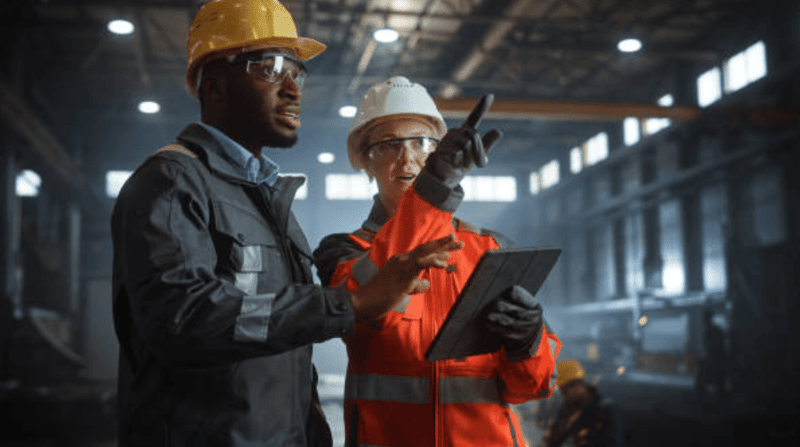Often, efforts toward continuous workplace safety improvement get discarded because of what we prefer to believe about our workforce's fitness for duty, rather than what we actually know about it. The truth is that without an objective way to measure the factors that contribute to improving workplace safety, we can’t determine trend directions and take corrective actions that prevent the factors that reduce productivity and create workplace hazards. We know that fatigue is a leading cause of workplace accidents, yet most companies don’t have active fatigue monitoring and management systems.

Workplace Safety Myth #1
We have good scheduling, so we don’t have a fatigue problem.
This reasoning exhibits two problems. First, it represents a common issue with the way safety systems are approached, which is reactive. The belief that "we don't have a fatigue problem," is based on thinking that there must be nothing to improve workplace safety until there is a problem. But this means that someone has likely already been placed at risk, if not hurt or killed when a problem is identified.
Workplace safety measures should be preventative and proactive, not just in reaction to a discovered problem.
Second, not all fatigue is work-related or the result of shift scheduling. Fatigue symptoms come from all sorts of causes, many of which occur when not at work. To assume that shift work is the only cause of worker fatigue is short-sighted and ignores other causes like illness, medications, working in extremely hot or cold conditions, dehydration, insomnia, stress, and so on. Just because a "fatigue problem" has not been noticed doesn't mean that a workforce is immune to fatigue risk.
If you employ human beings or even oompa loompas, fatigue risk is real.
Workplace Safety Myth #2
We don't have a drug use problem.
It is obviously a good thing that a drug problem has yet to be identified. However, this conclusion likely came from traditional drug testing, which is a trailing indicator--in other words, drug test results provide evidence of past conditions, not present or future ones.
A more accurate statement might be, "We haven't had many positive drug tests." A lack of positive tests doesn't mean that there will never be any, and it also does not mean that all employees will be drug-free while at work.
Many illicit drug users time their drug use according to their workplaces' random testing cycles, so they are able to abstain and clean out their systems before coming eligible for a drug test. Once the cycle has passed, they start using drugs again, knowing they will not be eligible for testing again for a while.
Some readers might believe that this doesn't happen at their workplaces, but without a way to test for impairment at the moment, they cannot actually know that it does not. Furthermore, the definition of a "drug use problem" is limited to the substances that traditional workplace drug screens are designed to detect.
Therefore, problematic use of drowsiness-inducing or intoxicating prescription or over-the-counter medications may go undetected. Traditional workplace drug screens cannot detect every substance that can impair a worker's cognition or alertness.
This is why testing for alertness can better indicate fitness for work and potential workplace safety issues than drug testing.
Workplace Safety Myth #3
We don't have a safety problem.
As explained above, waiting for a problem to occur before deciding that safety needs attention and improvement is reactionary, not preventative. A safety system based on reacting to problems does a serious disservice to the workforce because improving the system requires a safety incident to occur first. A company should not have to wait for an employee to be hurt or killed to understand where its safety system may need improvement.
Just because no problem has been recognized doesn't mean safety issues will never occur. Workplace safety should not simply be reacting to problems, it should be about preventing them and reducing the manifestation of future hazards.
A New Way to Think About Workplace Safety
All of these assumptions stem from a reactionary approach to safety--because a workplace safety problem has not been so far recognized, it does not exist and never will.
Studies and reports from the US Bureau of Labor Statistics, the National Safety Council, the American Society of Safety Professionals, as well as other government agencies, scientists, and professional associations around the world, have made it clear that fatigue and impairment risk are real and constant, even in companies that have so far been fortunate enough to avoid an accident.
More and more companies worldwide are beginning to realize that the work environment must change with the times, and that excellent safety performance is a constant, conscientious effort. Assessing fatigue in real-time is the only methodology to minimize the impact of fatigue on workplace safety, which can originate from a variety of factors that may or may not be being managed. Additionally, assessing alertness also reduces the risk of other causes of impairment other than fatigue.
More: The Ultimate Guide to Safety Culture




